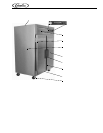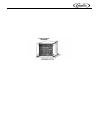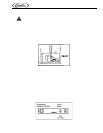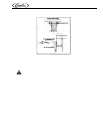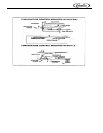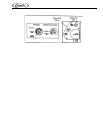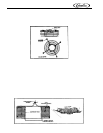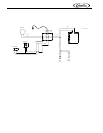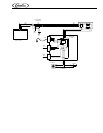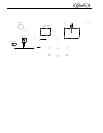
Reach-In Refrigerator Service Manual
© 2004, IMI Cornelius Inc. - 3 - Publication Number: 630460272SER
HOW YOUR CABINET OPERATES
CAUTION - Make sure the power supply is turned off before making any electrical repairs.
Defrost water flow
Your new cabinet is completely self-defrosting. The frost that collects on the concealed coils is
automatically removed at predetermined intervals. The defrost water on top-mounted condensing units
flows into a thermostatically controlled electric vaporizer where it is dissipated into the atmosphere. All
defrost evaporator systems are designed for normal conditions; however, under some conditions, where
practical and convenient, a drain line to a floor drain may be preferable to the vaporizer. On base-
mounted condensing units, the defrost water flows into the unit compartment and is vaporized by the heat
from the hot gas line.
Warning light and thermometer
A fan circulates the cold air from the coil throughout the storage area. This provides uniform
termperatures and more rapid recovery after door openings. The number of door openings and the length
of time the door is left open should be kept to a minimum to reduce the operating cost and maintain the
most efficient operation. The temperature in the cabinet will rise very rapidly whenever the doors are
opened; however, the product temperature is not greatly affected.
Some top-mounted cabinets have a thermometer and two small lights located at the right end of the front
motor cover grill, directly over the door. One light is green and is always lit when there is power to the
cabinet. One light is red and should only be lit when the temperature is above the safe zone. It is
controlled by a bi-metallic disk type switch.
The red light will be on at start up until the temperature comes down to normal. When warm product is
put in or the doors are held open for a time, the red light may come on but it will go out again as soon as
the temperature has recovered. When the doors are closed again, the recovery is very rapid unless a
large quantity of warm product is put in at one time.
FIGURE 3
FIGURE 4







